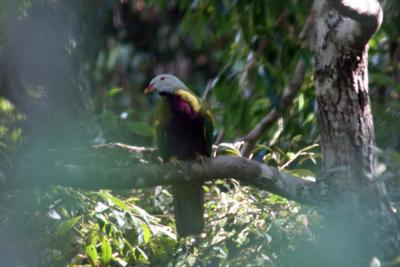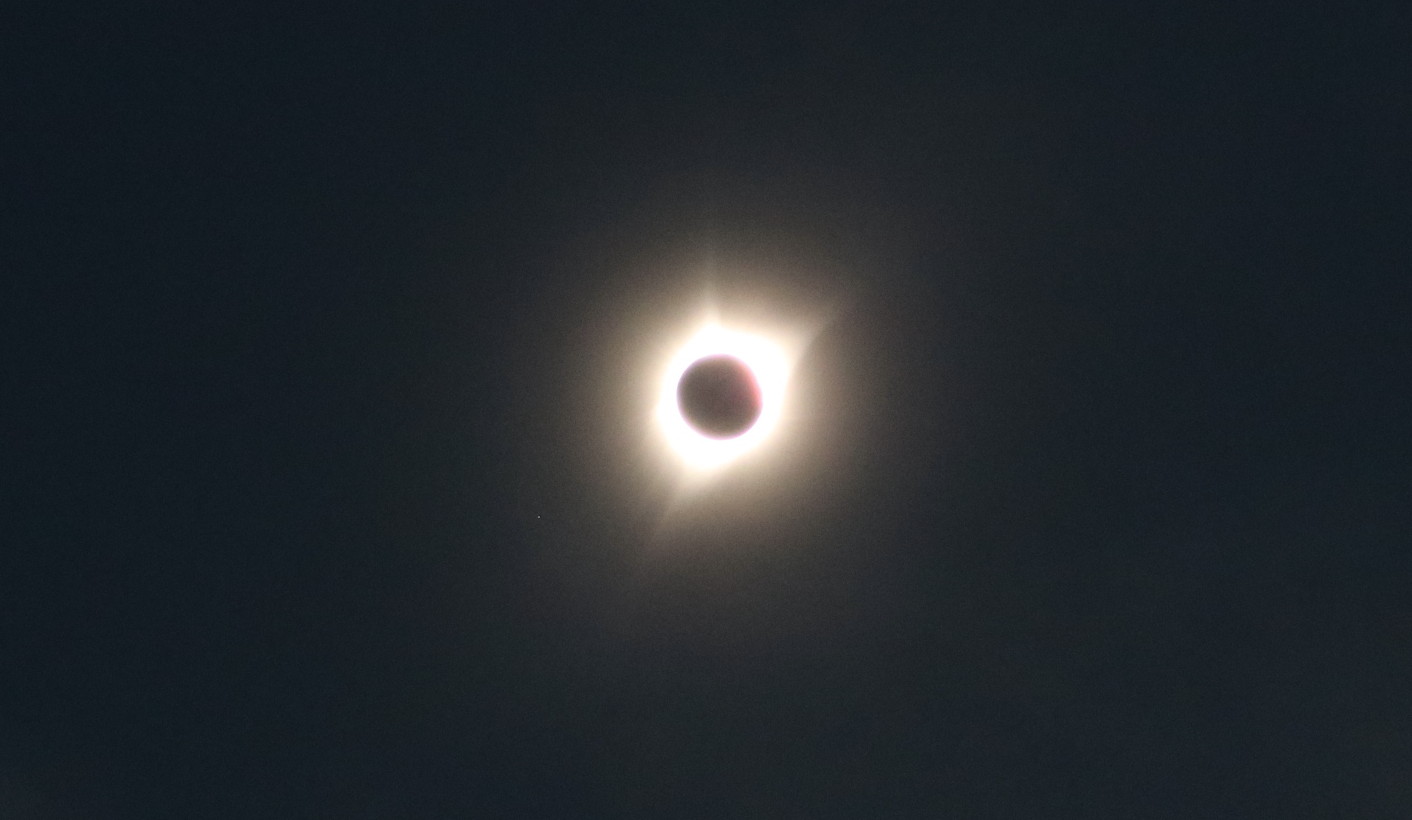A Walk in the Rainforest
 Mt. Tambourine National Park is a collection of smaller national parks on the slopes of Mt. Tambourine, an extinct weathered volcano. There is a town at the summit which features a variety of shops for those who enjoy quaint towns and browsing curio and antique shops. We went to take a walk in the rainforest. This was not to be an ordinary walk. The walkway was elevated. We walked out of the building that housed a café, a small museum with information about the rainforest into the upper level of the rainforest. As the slope dropped away from the under us, we were looking over most trees and into the largest trees. The walkway was sturdily constructed of metal with a metal grid on the floor. We could see below around and above us as we walked through the trees.
Mt. Tambourine National Park is a collection of smaller national parks on the slopes of Mt. Tambourine, an extinct weathered volcano. There is a town at the summit which features a variety of shops for those who enjoy quaint towns and browsing curio and antique shops. We went to take a walk in the rainforest. This was not to be an ordinary walk. The walkway was elevated. We walked out of the building that housed a café, a small museum with information about the rainforest into the upper level of the rainforest. As the slope dropped away from the under us, we were looking over most trees and into the largest trees. The walkway was sturdily constructed of metal with a metal grid on the floor. We could see below around and above us as we walked through the trees.
Signs on the railing of the walkway identified trees and plants along the way. We were looking down on palms with a few of the tallest being at eye level. The palms were flowering and insects swarmed the flowers. Major trees in the Australian rainforest are the eucalyptus tree and the strangler fig. The rainforest covered most of Australia in the past but as the environment and population changed, the rainforest has shrunk to about 10% of the continent.
In the rainforest, the eucalyptus trees and the strangler figs struggle for dominance.
Eucalyptus trees fight the strangler fig by shedding their tendrils. Their bark easily peels from the tree so the strangler fig can’t attach to them. The figs are very effective at taking over other trees. Figs start when bird drop their seeds in their droppings on a tree branch. These seeds will sprout and live in the branches of the tree while they grow vines down to the ground which will become roots. Eventually the fig grows to surround the entire host tree and covers it shading it, starving it of sunshine. The fig then becomes a free standing tree. As the host tree rots away, the fig fills in missing tree with more of its vines. The figs were covered with fruit which was ripening. These provide a rich source of food for the birds of the rainforest. The rainforest is a tangle of vines of the figs, they are everywhere.
One of the birds we saw was the Wompoo Fruit-Dove, a large dove almost 20 inches from head to tail. It is a beautiful bird with a white head, green wings, plum purple breast and yellow abdomen. The dove is an ally of the strangler fig. It feeds on the figs and drops the seeds which sprout to form more fig plants. These in turn feed the doves.
An animal which we didn’t see but which lives in this rainforest is the Koala. They feed on the eucalyptus leaves and sleep during the day high in the trees. They are difficult to spot as they cling to the trunk of a tree resting on a branch they become just another bump on the tree. We were told where they are sometimes seen and looked for them but our untrained eyes were unsuccessful. We hope that we will be able to find one as our exploration of the Australian rainforest continues.



0 Comments
Recommended Comments
There are no comments to display.
Please sign in to comment
You will be able to leave a comment after signing in
Sign In Now